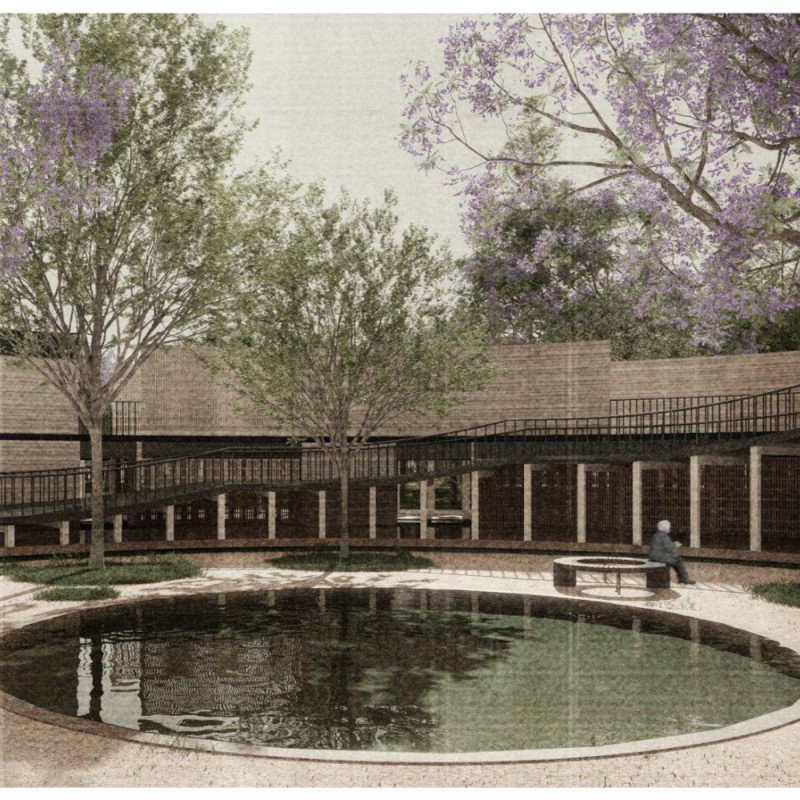5 key facts about this project
### Overview
Located in an urban setting, the Senior Club project aims to innovate senior housing by fostering a sense of community and engagement among its residents. The design approach integrates sustainable practices while providing an environment that encourages interaction and inclusivity. By merging with the existing neighborhood, the project seeks to enhance both resident well-being and community connections.
### Spatial Strategy and Layout
The architectural configuration employs a circular design, which is pivotal in enhancing accessibility and facilitating interpersonal interactions. The layout ensures that pathways are navigable for individuals with diverse mobility needs, featuring modules designed at 1.20-meter intervals. A central common area, highlighted by a circular pool, acts as a social hub surrounded by flexible spaces for gathering, medical support, and therapy. Entrances are accessible with ramps, and the arrangement of private residences maximizes natural light and views, reinforcing a balance of comfort and independence for residents. Common facilities include a dining room, multi-purpose room, gym, and gardens, providing varied opportunities to foster communal living.
### Material and Sustainability Features
The building's material selection prioritizes low-impact alternatives, with an emphasis on sustainability. Prominently, wood is utilized for its renewable properties and aesthetic benefits, while thermal- and acoustic-insulating walls made from compressed earth enhance energy efficiency and sound absorption. Rainwater harvesting systems support gardening and other non-potable uses, bolstering self-sufficiency within the community. Additional sustainable features include community gardens that provide fresh produce and financial opportunities for residents, as well as shared spaces designed to promote an active lifestyle through various activities. This integration of innovative and traditional techniques demonstrates a commitment to reducing ecological impact while maximizing functionality.


















































